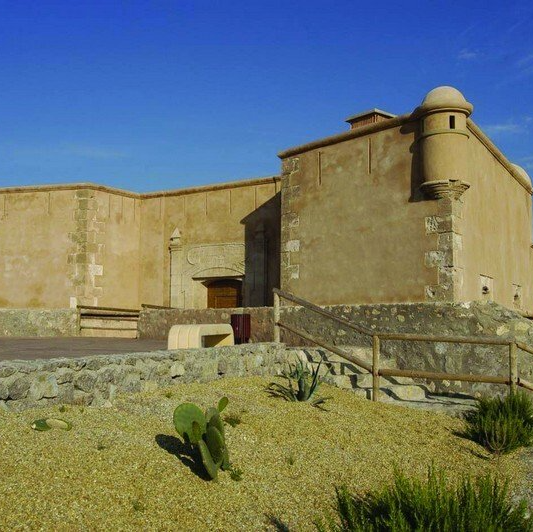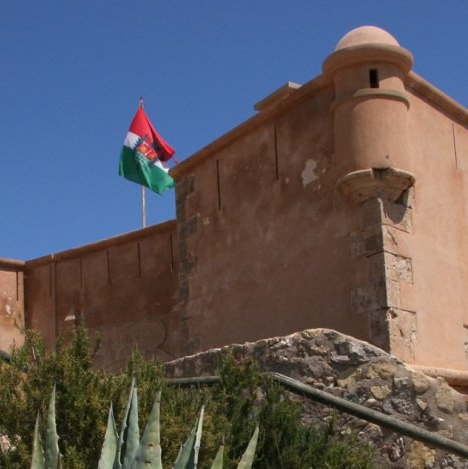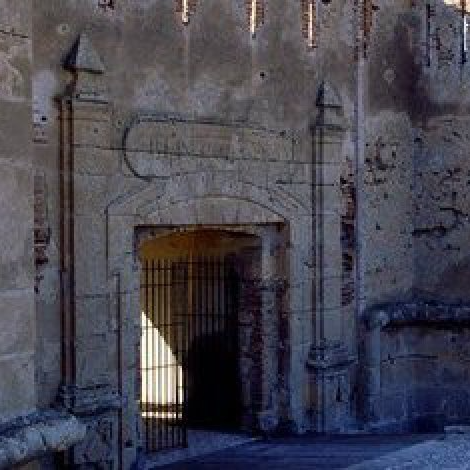GEODE
The so-called Pulpí Geode is a giant geode found near the town of Pulpí (province of Almería) by the Madrid Mineralogist Group in December 1999.
It is the largest geode in the world documented to date. Both its dimensions and the transparency and perfection of the plaster crystals that line its interior, which reach up to 2 m in length, make it a worldwide phenomenon.
It occupies a hollow volume of 10.7 m³ (8 m long, 1.8 m wide, 1.7 m high) and is located 50 m deep in the Pilar de Jaravía lead mine, in laSierra del Aguilón, in the municipality of Pulpí, coinciding with sea level, and 3 km from the coastline.
It is funnel-shaped, with the narrowest part in the shape of an L.
Terreros Island
It is a Spanish islet of volcanic origin located on the coast of the province of Almería, about 700m south of the beach of San Juan de los Terreros, a district of the municipality of Pulpí. Terreros Island has 34 607722698m² and a maximum height of 30 m. It presents scarce vegetation composed of rocky plants and creeping scrub, with singularities of probable ornithocoprophilous origin. A wide variety of nesting seabirds reproduce in them, not in vain the island of Terreros is home to the largest community in the province. Among them, endangered species such as the Cory's shearwater (Calonectris diomedea) and the European storm-petrel (Hydrobates pelagicus) or others such as the yellow-legged gull (Larus michahellis) stand out. Among the terrestrial ones that inhabit the adjacent coastline are the little egret (Egretta garzetta), the cattle egret or the pale egret (Apus pallidus). It has great landscape value, with striking volcanic outcrops.
Its sea beds are also very rich. The Posidonia meadows (Posidonia oceanica) stand out in them, an aquatic plant exclusive to the Mediterranean Sea that provides shelter and food to multiple species of fish, crustaceans, cephalopods and invertebrates.
BLACK ISLAND
It is an abrupt rock of 6,015 m2 made up of andesites and other volcanic rocks, with an abundant presence of hornblendes and magnetites, responsible for its dark color.
It presents a scarce vegetation composed of rocky plants and creeping scrub. A wide variety of nesting seabirds breed in them. Endangered species such as the Cory's shearwater and the European storm-petrel or others such as the yellow-legged gull stand out. Among the terrestrial species that inhabit the adjacent coastline are the little egret, the cattle egret, the black wheatear, the common jackdaw, the common swift or the pallid.
Its sea beds are also very rich. The Posidonia meadows (Posidonia oceanica) stand out in them, an aquatic plant exclusive to the Mediterranean Sea that provides shelter and food to multiple species of fish, crustaceans, cephalopods and invertebrates.
Isla Negra also has a great landscape value, with striking volcanic outcrops.
Its sea beds are also very rich. The Posidonia meadows (Posidonia oceanica) stand out in them, an aquatic plant exclusive to the Mediterranean Sea that provides shelter and food to multiple species of fish, crustaceans, cephalopods and invertebrates.
COCEDORES BEACH
This beach on the Costa De Almería is located in San Juan de los Terreros. Known as Playa de los Cocedores because during the 20th century there was a natural esparto grass cooker there.
What most fascinates about this beach, 150 meters long, is the crystal clear water and the natural pool that it forms, ideal for children who do not know how to swim, with its striking cliffs.
It forms a natural crescent with abundant sand and a magical setting.
The mountain that protects it, eroded by the effect of the sea, has left a landscape that, from the water and with the sun shining, makes one think that one is on another planet.
It is surrounded by striking wild and natural cliffs where we can see a beautiful landscape of sandstone rock with caves. People used to live in them, who were in charge of cooking the esparto grass.
There is no other security service than the one on the beach next door.









